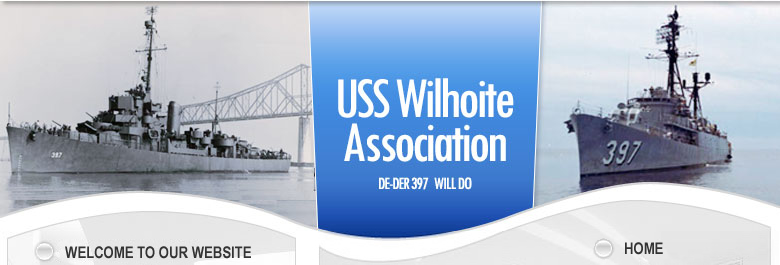Wilhoite History
Thomas Mack Wilhoite—born on 12 February 1921 in Guthrie, Ky.—enlisted in the Naval Reserve on 16 June 1941 at Atlanta, Ga., and received his aviation indoctrination training at the Naval Reserve Air Base, Atlanta, Ga. On 7 August. He reported for flight instruction at the Naval Air Station (NAS), Pensacola, Fla., and was appointed an aviation cadet the following day. Transferred to NAS, Miami, Fla., on 15 January 1942 for further training, he became a naval aviator on 6 February. Three days later, he was commissioned an ensign and, at the end of February, reported to the Advanced Carrier Training Group, Atlantic Fleet, NAS, Norfolk, Va.
There, he joined Fighting Squadron (VF) 9, then fitting out and, in time, became the assistant navigation officer for that squadron.
Operation "Torch"—the invasion of French North Africa—saw VF—9 assigned to the carrier Ranger (CV-4). Each section of the squadron drew assigned tasks on 8 November 1942, the first day of the landings; and Wilhoite flew one of five Grumman F4F-4 Wildcats which attacked the French airdrome at Rabat-Sale, the headquarters of the French air forces in Morocco. Despite heavy antiaircraft fire, he pressed home a determined attack and set three French bombers afire with his guns.
In a second strike directed at the Port Lyautey airdrome later that day, Wilhoite flew as part of the third flight and destroyed one fighter—a Dewoitine 520—by staffing. However, the Vichy ground gunners served their weapons well; and Wilhoite's Wildcat took hits from the intense flak and crashed about one mile from Port Lyautey.
Wilhoite received a Silver Star, posthumously, for displaying "conspicuous gallantry and intrepidity" during the strikes at Rabat-Sale and Port Lyautey. The accompanying citation also cited Wilhoite's "superb airmanship and tenacious devotion to duty" in pressing home his stafing attacks. Although he was killed in action, Wilhoite had played his part in the significant operations of VF-9 in neutralizing Vichy French air power that, if unhindered, could have severely hampered Operation "Torch."
(DE-397: dp. 1,200; 1. 306'0"; b. 36'7"; dr. 8'7" (mean); s. 21 k.; cpl. 186; a. 3 3", 2 40mm., 10 20mm., 2 dct., 8 dcp., 1 dcp. (hh.) ; cl. Edsall)
Wilhoite (DE-397) was laid down on 4 August 1943 at Houston, Tex., by the Brown Shipbuilding Co.; launched on 5 October 1943; sponsored by Mrs. Corinne M. Wilhoite, the mother of Ensign Wilhoite; and commissioned at Houston on 16 December 1943, Lt. Eli B. Roth in command.
After her shakedown out of Great Sound, Bermuda, from 9 January to 10 February 1944, Wilhoite underwent post-shakedown availability at the Charleston (S.C.) Navy Yard from 11 to 21 February. She then got underway for Gibraltar with Convoy UGS (United States to Gibraltar) 34 on 23 February. On two occasions during the voyage, the destroyer escort depth-charged presumed submarine contacts with inconclusive results. After turning the convoy over to British escort vessels once she had passed through the Strait of Gibraltar, Wilhoite returned to the United States with Convoy GUS (Gibraltar to the United States) 33 and arrived at New York City on 3 April.
After a 10-day availability at the New York Navy Yard, the destroyer escort operated briefly with submarines and PT boats and conducted antiaircraft firing practice in Block Island Sound, Brooklyn, N.Y., before shifting south to the Tidewater area to pick up Convoy UGS-40 in Hampton Roads late in April.






